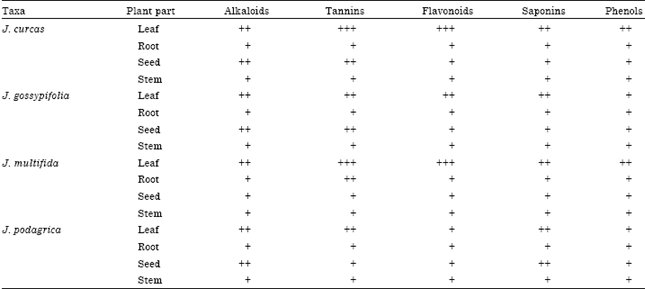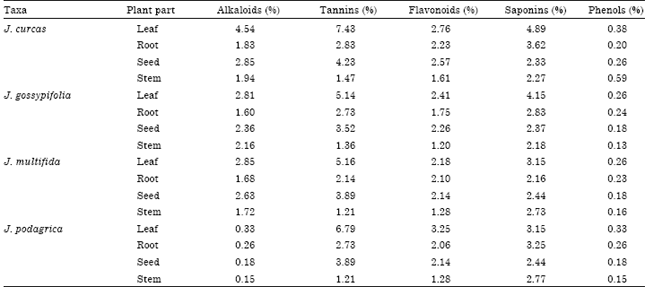Research Article
Comparative Phytochemical Screening of Jatropha L. Species in the Niger Delta
Department of Plant Science and Biotechnology, Faculty of Sciences, University of Port Harcourt, Nigeria
A. Blessing
Department of Plant Science and Biotechnology, Faculty of Sciences, University of Port Harcourt, Nigeria
I.O. Agbagwa
Department of Plant Science and Biotechnology, Faculty of Sciences, University of Port Harcourt, Nigeria
B.E. Okoli
Department of Plant Science and Biotechnology, Faculty of Sciences, University of Port Harcourt, Nigeria











